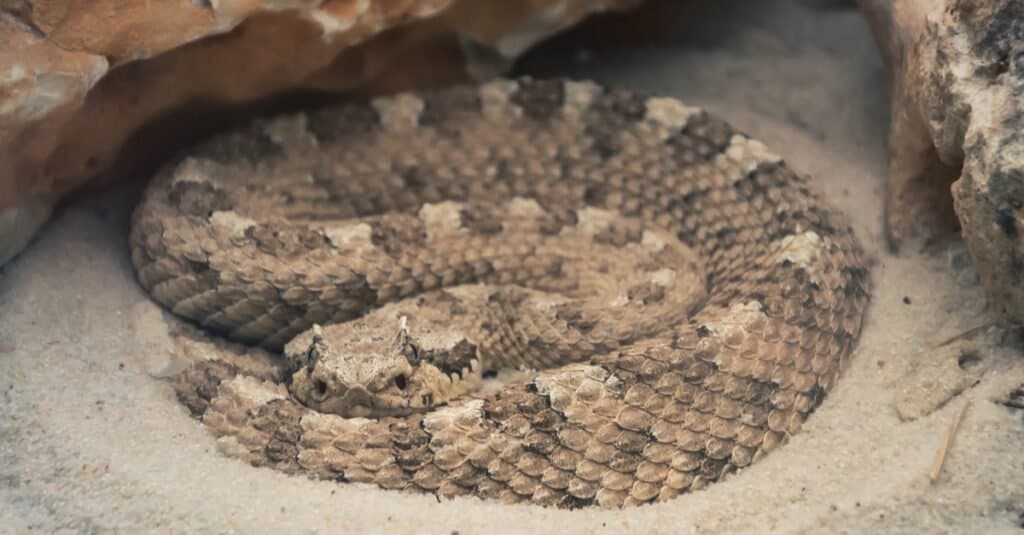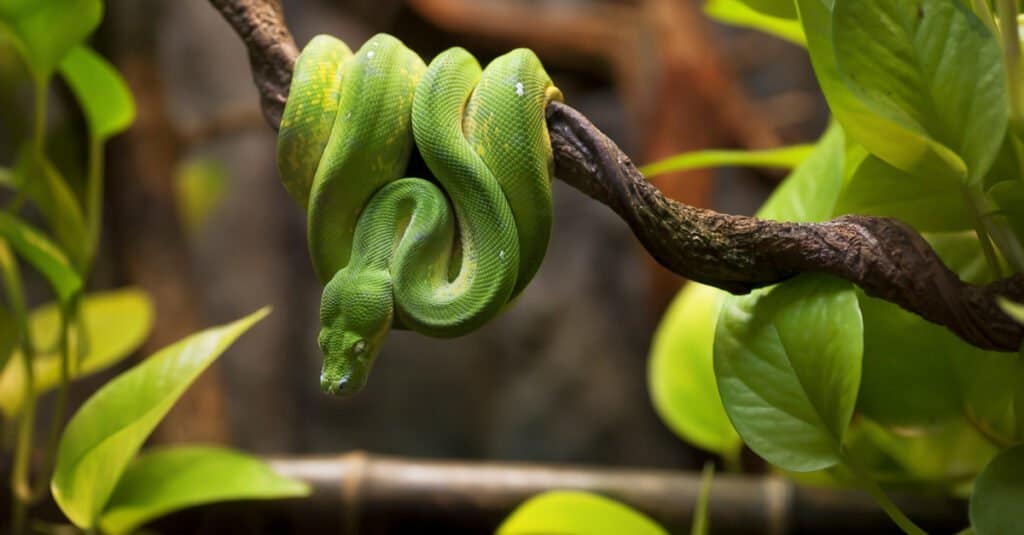Have you ever wondered if snakes drink water? Like all living creatures, water is essential for snakes’ survival. However, snakes have unique adaptations for acquiring and storing water. Some use rain or mist, while others collect water droplets from their scales or skin. Even certain types of snakes with special scales help them gather water for drinking. Water is just as important for snakes as it is for any other living creature.
In this article, we will examine the methods snakes use to drink water, their frequency of drinking, and their ability to survive without water.
How Often Do Snakes Need to Drink Water?
Snakes have a low metabolic rate, so they don’t need to drink water as frequently as mammals do. The amount of water they need to consume also depends on the species, size, and the environment they live in. For example, snakes that live in arid environments require less water than those living in humid climates.
Snakes often rely on their prey’s moisture as a water source. Some species, such as the sidewinder rattlesnake, have adapted to survive without water for long periods. They can obtain all the moisture they need from their prey, which includes lizards and rodents.
Snakes drink from natural water sources like ponds, streams, and puddles. Certain types, such as the diamondback water snake, are semi-aquatic and mainly inhabit watery areas. These snakes can drink as often as every day.

Sidewinder rattlesnakes have adapted to survive without water for long periods.
©RA fotografia/Shutterstock.com
How Do Snakes Drink?
Snakes don’t drink water the way mammals do. They don’t have lips or cheeks to suck water in. Instead, they use their jaws to capture water and then swallow it.
One way snakes drink is by using their tongues to capture water droplets. When the snake flicks its tongue, it picks up small water droplets on its tongue’s surface. The snake then draws its tongue back into its mouth and presses it against the roof of its mouth, forcing the water droplets down its throat.
Another way snakes drink is by dipping their mouths into water and sucking it in. They use a process called “lingual pumping,” where they rapidly move their tongue in and out of their mouth, creating a vacuum that draws water into their mouth. The snake then swallows the water.
Snakes also can absorb water through their skin. Particular species, like the green tree python, have been seen soaking water droplets through their skin when misted in captivity.

Particular species, like the green tree python, can absorb water through their skin.
©Tom_Deer/Shutterstock.com
Can a Snake Live Without Water?
While snakes have adaptations to help them survive without water for extended periods, they can’t live without it. Water is necessary for many of their bodily functions, such as digestion and temperature regulation.
Snakes can become dehydrated if they don’t have access to water for an extended period. Dehydration can cause various health problems, such as lethargy, weight loss, and even death.
In the wild, snakes face many challenges when finding water. With climate change and habitat destruction, many snake species risk losing access to water sources. Conservation efforts can help ensure these fascinating creatures continue to thrive and survive in the wild.
Signs of Dehydration in Snakes
It can be challenging to tell if a snake is dehydrated, as the signs can be subtle. However, there are some common symptoms of dehydration in snakes that you can look out for.
One of the snakes’ most noticeable signs of dehydration is wrinkled or folded skin. When dehydrated, a snake’s skin will look dry and shriveled, and it may have wrinkles or folds. Dehydrated snakes may also have sunken eyes or a lack of muscle tone.
Another sign of dehydration is lethargy or a lack of energy. It may be dehydrated if your snake is usually active but suddenly lethargic. Other signs include a lack of appetite, difficulty shedding, and changes in behavior or temperament.
If you suspect your snake is dehydrated, taking action immediately is essential. Provide your snake with fresh water and monitor their behavior closely. If the symptoms persist, consult a veterinarian with experience treating reptiles.
Preventing dehydration in snakes is crucial. Ensure your snake has access to fresh, clean water, and change the water regularly to avoid bacterial growth. You can also mist your snake’s enclosure to increase humidity levels and help keep its skin hydrated.

It can be challenging to tell if a snake is dehydrated, as the signs can be subtle.
©New Africa/Shutterstock.com
Signs of Suffering in Snakes
As a responsible pet owner or wildlife enthusiast, it’s essential to know the signs of suffering in snakes. Snakes can’t communicate their discomfort or pain as quickly as other pets, so they must be attentive to their behavior and body language. Here are some signs that a snake may be suffering:
Lack of appetite
If you notice that a snake has stopped eating or is eating less than usual, it may be a sign that it is not feeling well or in discomfort.
Unusual behavior
If a snake is showing unusual behavior like increased aggression or low energy levels, it might indicate that it is experiencing pain or discomfort.
Respiratory issues
Snakes often have respiratory problems that may indicate an underlying health issue. If a snake is wheezing, coughing, or breathing heavily, it might mean distress.
Difficulty moving
Signs of illness or pain in a snake may include difficulty moving or weakness.
Abnormal shedding
Abnormal shed skin or difficulty shedding could indicate a potential health issue for snakes.
Swelling or discharge
It might indicate distress if you notice swelling or discharge in a snake’s eyes, mouth, or nostrils.
Changes in skin color
A sudden change in a snake’s skin color can indicate something is wrong with its health.
Weight loss
A snake losing weight rapidly or appearing thinner than usual could indicate an underlying health problem.
If you see any of these signs in your pet snake, you must take them to a qualified reptile veterinarian for diagnosis and treatment. Snakes are good at masking their discomfort, so it’s crucial to keep an eye on their behavior and seek veterinary care immediately if you notice any indications of a problem.
How Do Environmental Factors Affect Snakes’ Water Intake?
Snakes are ectothermic, which means that their environment regulates their body temperature. As a result, environmental factors such as temperature, humidity, and the availability of water sources can significantly impact snakes’ water intake.
Snakes in arid environments, such as deserts, require less water than in humid climates. In dry environments, snakes obtain much of their water from their prey, often containing high amounts of moisture.
In contrast, snakes that live in humid environments, such as rainforests, require more water. These snakes must consume more water to regulate their body temperature and perform bodily functions.
The availability of water sources also affects snakes’ water intake. Snakes that live near natural water sources such as streams, ponds, or rivers can drink water more frequently. Snakes that live in areas with limited water sources, such as deserts, need to be more efficient at conserving water.
Climate change and habitat destruction can also impact the water source availability for wild snake populations. Changes in temperature and precipitation patterns can affect the timing and availability of water sources. Habitat destruction can also lead to the loss of natural water sources, making it difficult for snakes to obtain the water they need to survive.
Understanding how environmental factors affect snakes’ water intake is essential for protecting their populations and habitats. It can help us develop conservation strategies that ensure snakes have access to the water sources they need to survive.
Snake owners can always give their pets access to pure, clean water in captivity. They can also spray their snake’s habitat to raise moisture and hydrate their skin. By taking proper care of pet snakes, owners can help ensure their health and well-being.

Snake owners can always give their pets access to pure, clean water in captivity.
©Afif Abd. Halim/Shutterstock.com
Conclusion
Snakes are sensitive to environmental factors such as temperature and humidity, which can affect their water intake. Understanding how environmental factors influence snakes’ water intake is critical for protecting wild snake populations and habitats. In captivity, providing access to clean water and increasing humidity levels in the enclosure can help properly care for pet snakes. In the wild, conservation strategies must be implemented to ensure snakes can access the required water.
The photo featured at the top of this post is © Ken Griffiths/Shutterstock.com
Discover the "Monster" Snake 5X Bigger than an Anaconda
Every day A-Z Animals sends out some of the most incredible facts in the world from our free newsletter. Want to discover the 10 most beautiful snakes in the world, a "snake island" where you're never more than 3 feet from danger, or a "monster" snake 5X larger than an anaconda? Then sign up right now and you'll start receiving our daily newsletter absolutely free.
Thank you for reading! Have some feedback for us? Contact the AZ Animals editorial team.






